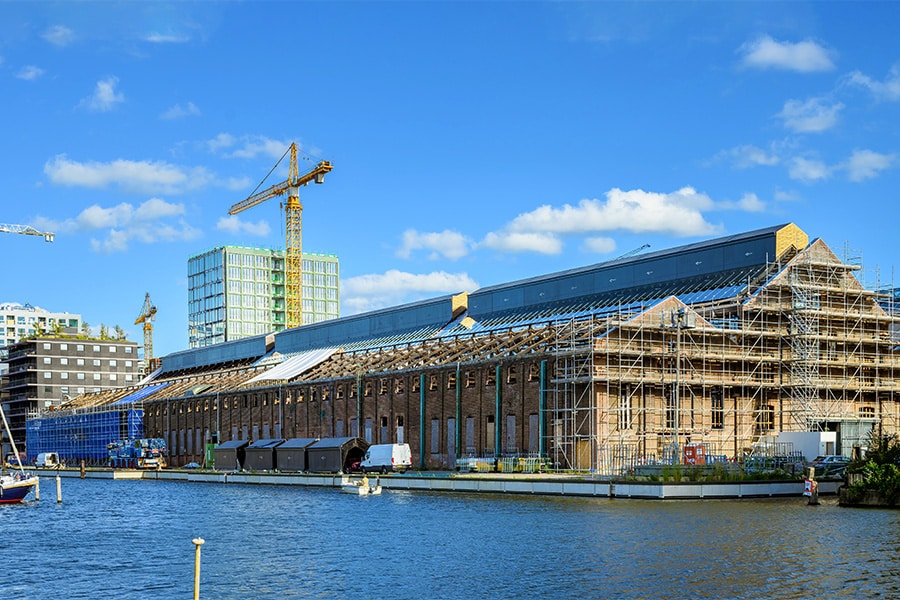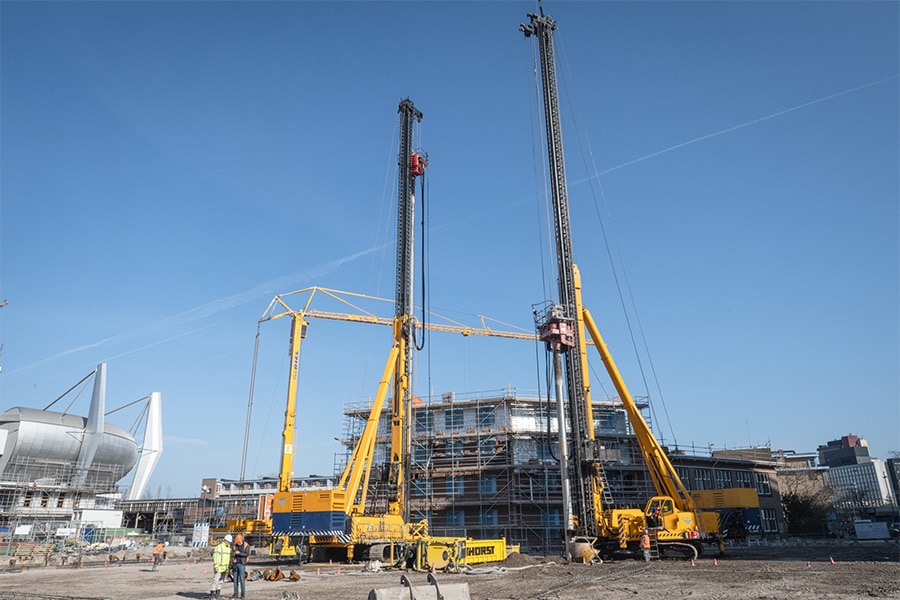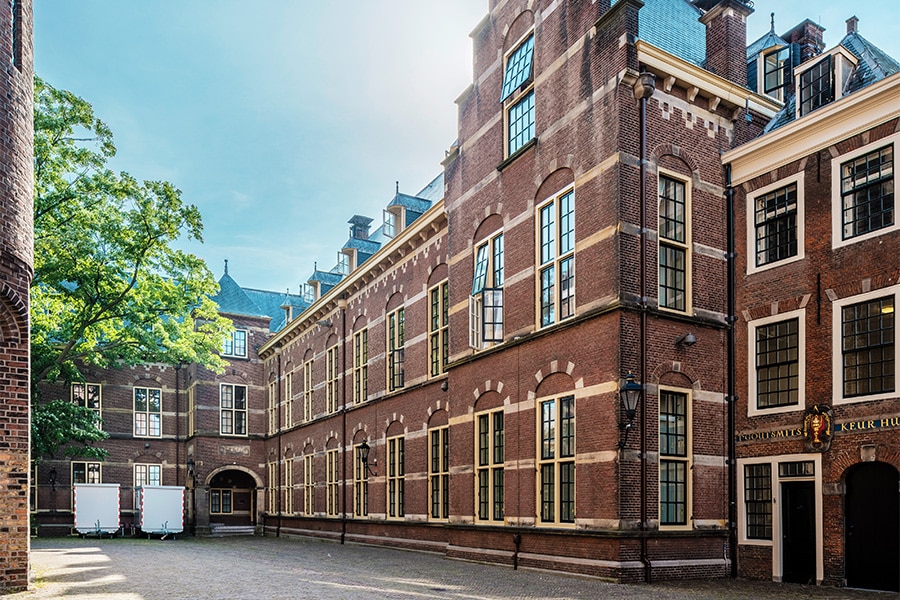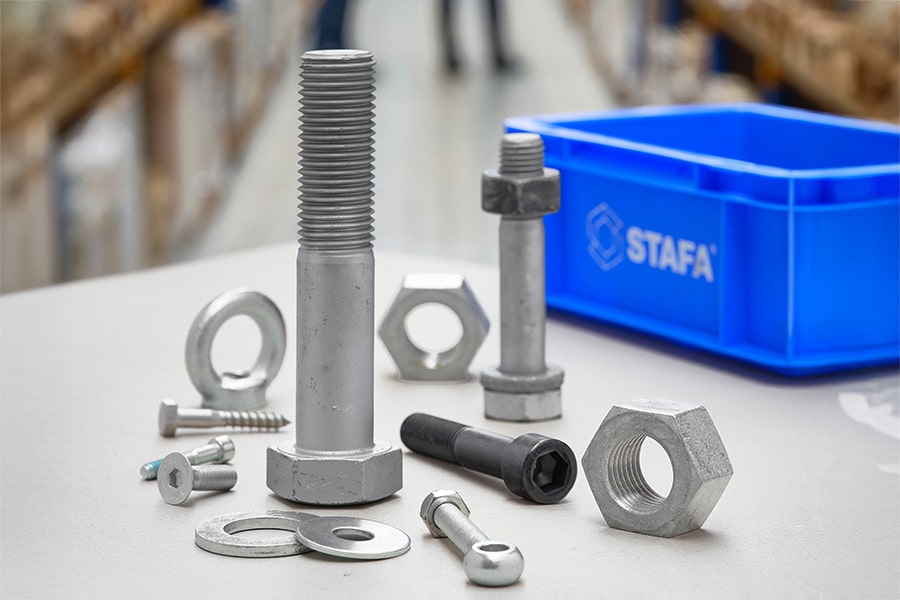
Feringa Building rests on a forest of poles
Ballast Nedam Funderingstechnieken is responsible for the complete substructure (up to the work floor) of the Feringa Building on the campus of the University of Groningen. In total, about 2,000 piles will disappear into the subsurface. The more than 60 kilometers of foundation piles is the equivalent of 620 times the height of the Martinitoren. Work planner Jan Kohlmann leads us around the "pile forest" under the Feringa Building and talks about the main challenges in the project of extremes.
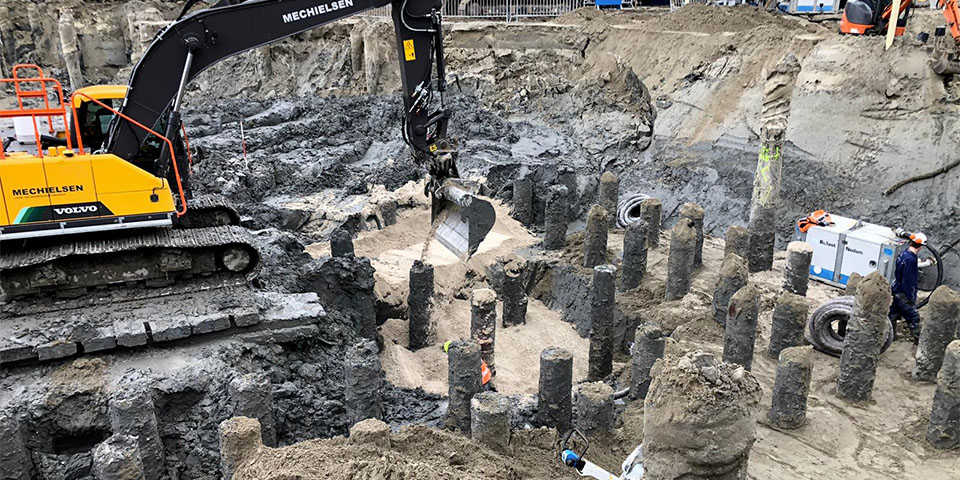
The pole forest was excavated in two phases.
The first pile was drilled in July 2019, followed by the last and 1,725th pile for the first phase at the end of January 2020. "Before we could start installing the piles at all, we set up a piling platform to provide the scaffolding with sufficient stability," begins Kohlmann. "To this end, as much as 15,500 m³ of sand was brought in. To keep the plateau dry during drilling, so that the machines can work safely, a drainage system was installed under the plateau - after all, we are injecting grout into the soil. Until the 2019 construction vacations, we ran with one rack. After the vacations, we started working with four racks."
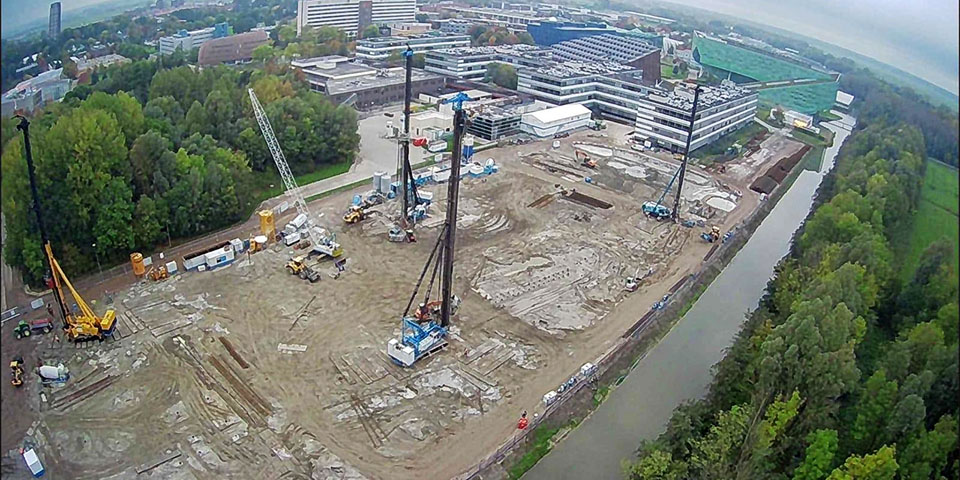
While one scaffold was used before the construction vacation, four scaffolds were deployed after the vacation in order to install all 1,725 piles of the first phase on time.
High concentration of poles
The project is characterized by a high concentration of piles in a relatively small area. "This is partly due to the seismic beams, the large V-shaped piles that are supposed to absorb and bear off any earthquakes," Kohlmann explains. "The problem here was a relatively weak foundation. According to standards, when making a new pile, you have to keep at least four times the diameter of the pile in relation to a fresh pile. That proved insufficient here. To make a good pile, we had to keep a distance of ten times the diameter. That meant a lot of skipping and made planning extra complex. While we worked with one scaffold before the construction vacations, four scaffolds were used after the vacations to install all 1,725 piles of the first phase on time. The foundation pile used is a soil displacement drilling pile with grout injection and a lost drill point. Within Ballast Nedam we call this pile the BSD pile (Ballast-Nedam Screw displacement-pile)."
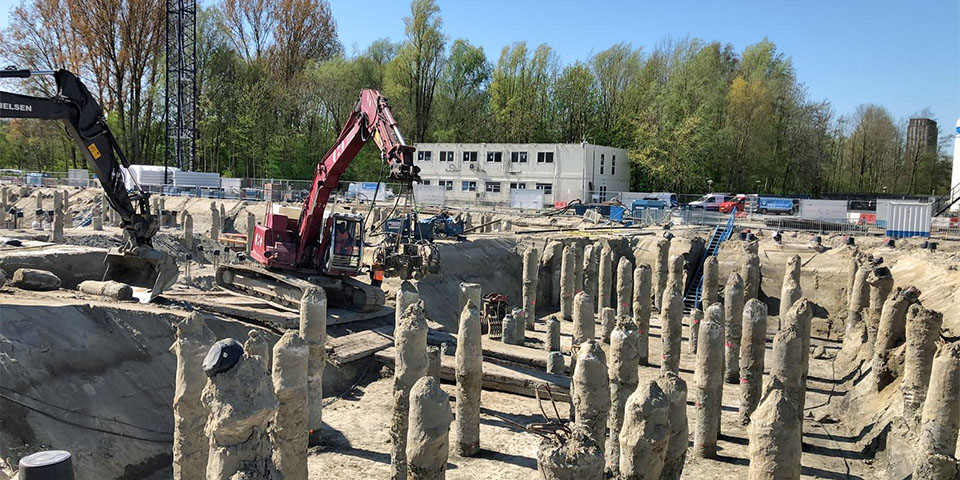
The more than 60 kilometers of foundation piles is the equivalent of 620 times the height of the Martinitoren.
Headhunting
After the last pile of the first phase was installed at the end of January, work began almost immediately on decluttering the atrium and bicycle basement. Kohlmann: "Again quite a challenge, as you excavate a pile forest to a depth of 3 meters below ground level. Because there would be too much over-length at that depth, the pile forest was excavated in two phases. In the first phase, the piles were cut and after the two stroke we were able to cut the heads. Then the soil was flattened and the subsoil compacted. On this, Ballast Nedam was able to realize the work floor and start with the basement and superstructure. In total, we excavated 36,000 m³ of soil in the project. Because of the space on the site, an open excavation was chosen instead of a sheet pile pit. Once Ballast Nedam has risen above ground level, we backfill the 'construction pit' to floor level and our job is done."

The applied foundation pile is a soil displacement drilling pile with grout injection
and a lost drill point, the BSD pole.
